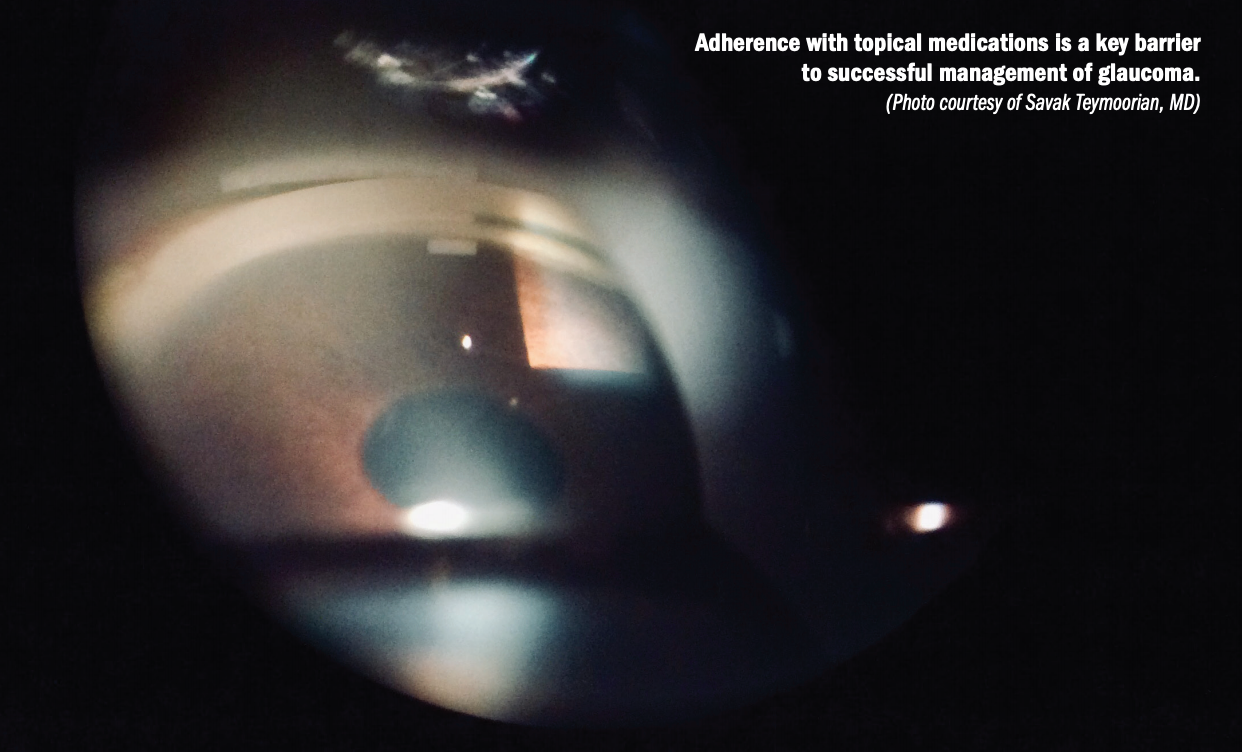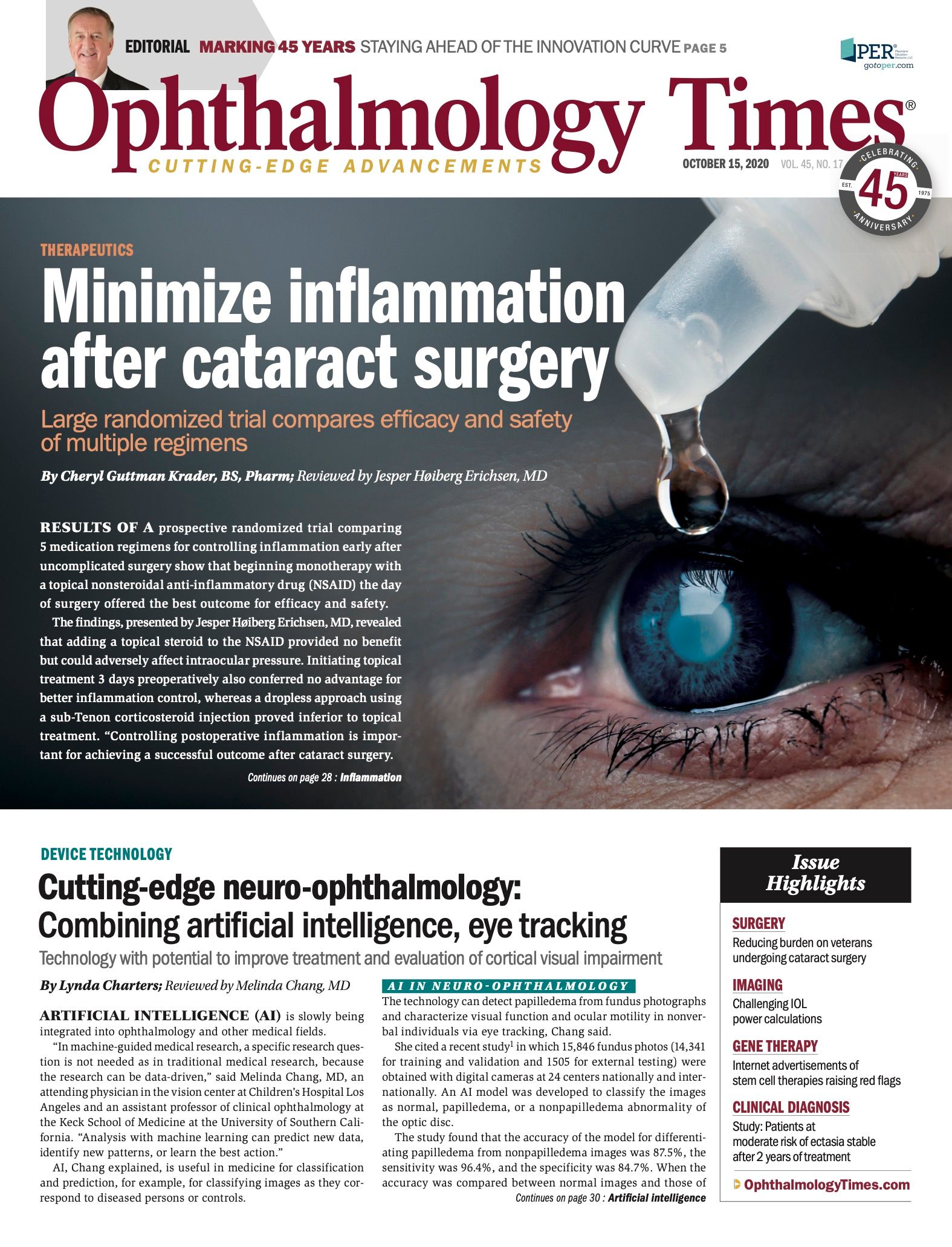Publication
Article
Digital Edition
Long-acting prostaglandin implant creating shift in IOP-lowering therapy
Author(s):
Sustained release helps mitigate disease progression without impacting quality of life.

This article was reviewed by Savak Teymoorian, MD, MBA
Early experience with the new intracameral bimatoprost 10-μg implant (Durysta, Allergan) in clinical practice indicates that it is a valuable addition for treating patients with ocular hypertension and glaucoma, according to Savak Teymoorian, MD, MBA.
“Our aim in managing patients with ocular hypertension and glaucoma is to control their IOP so as to mitigate disease progression without adversely affecting quality of life,” said Teymoorian, a cataract and glaucoma specialist at Harvard Eye Associates in Orange County, California.
Related: IOP homeostasis in glaucoma: Looking below the surface
“In deciding on our interventions to achieve that goal, it is necessary to balance the risks and benefits of each treatment option. It is clear to me that with its IOP-lowering efficacy and ability to address the drawbacks associated with topical drops, the benefits of the sustained-release prostaglandin significantly outweigh any risk associated with its administration.”
Teymoorian told Ophthalmology Times® that he implanted the bimatoprost product into approximately 55 eyes within the first month of using it.
The satisfaction shared by patients is something novel in the glaucoma segment of his practice and is rewarding.
“Ophthalmologists who perform cataract surgery are used to seeing patients who are extremely happy because of the outcomes of their procedure, but gratification is rare among patients being treated for glaucoma. The recipients of the bimatoprost implant, however, are extremely happy because they have been able to eliminate or reduce their topical medications and the inconvenience, [adverse] effects, and cost associated with their use,” he said.
Related: Study results show that surgical system decreases IOP in patients with POAG
Addressing a major obstacle
Adherence with topical medications is well recognized as a key barrier to successful management of glaucoma. The issues underlying Adherence are multifaceted, Teymoorian said.
“Noncompliance can occur because of a plethora of factors. Some patients do not get their prescription filled, some don’t remember to use their medications, and some do not instill them properly,” he explained.
“The ability to take the responsibility for treatment away from the patient is one of the reasons why the minimally invasive glaucoma procedures have done so well. The value of the bimatoprost implant is similar in that regard,” he added.
The ability to reduce ocular surface toxicity from topical drops is another benefit of the bimatoprost implant.
“Minimizing or eliminating the number of topical medications a patient is using allows the ocular surface condition to improve. As a result, patients are more comfortable, their vision is better, and they can also eliminate or reduce their need for artificial tears and any other medications that they are using to manage dry eye signs and symptoms,” he said.
Related: Examining ocular allergy, quality of life
Patient selection
Patients who are on topical medications for IOP-lowering, regardless of where they are on the continuum of glaucoma severity, may be considered as candidates for the bimatoprost implant.
However, Teymoorian noted that so far he has selected patients who are taking a topical prostaglandin analogue and who are pseudophakic in particular because they will likely have a deep anterior chamber, enabling safe and proper placement of the implant, and cataract development will not be an issue.
“My accumulating experience with the product is reinforcing its efficacy, safety, and benefits. The more I see how it allows me to discontinue all or some topical medications and how happy patients are, the more I am willing to offer the implant to patients,” he explained.
Procedure logistics and follow-up
The implantation procedure should be done with the eye topically anesthetized and under aseptic conditions.
Depending on their comfort level and facility, clinicians can choose to perform the procedure either in a surgery center using an operating microscope, or a slit lamp in an in-office procedure room.
Related: Traditional glaucoma surgery in the era of MIGS procedures
When injecting the bimatoprost implant in the surgery center where the patient is lying under the microscope, Teymoorian said he has the patient’s head tilted up at about 30° and asks the patient to sit up immediately after the injection as these positions promote settling of the implant into its targeted location in the inferior angle.
The procedures have gone smoothly.
“It has been remarkable to me that as soon as the injection is done, patients note how easy it seemed, tell me that they felt nothing, and ask when can they have the second eye procedure,” Teymoorian said. “I take these as signs that the procedure is well tolerated. The key is to make sure the patient is comfortable.”
Changes to existing topical medications and scheduling of the first postinjection follow-up visit are individualized, taking into account medication burden and glaucoma severity.
Patients on a topical prostaglandin alone or a topical prostaglandin plus one adjunctive medication whose IOP has been well controlled may have both agents discontinued if they have mild-to-moderate glaucoma, and they will likely be asked to return 7 to 10 days postinjection.
Related: Glaucoma drug delivery devices enter new frontier
Patients with more severe disease and on multiple medications are seen within a few days after the procedure and are weaned more slowly off existing topical drops according to the level of their IOP.
“Initially I thought the implant would be something that could simply replace a topical prostaglandin. However, as I treat more patients who are on multiple medications, I am realizing that some can do very well being taken off more than just the prostaglandin,” Teymoorian said. “The experience with patients who can stop multiple medications highlights the efficacy of the implant and also the problem of noncompliance for patients who are on topical drops. Clearly, even those individuals who are well intentioned may not be administering their medications properly.”
Looking ahead
The implant is approved for one-time administration. Clinical trial experience indicates that the IOP-lowering benefit can last from 4 months to 2 years or more, and research is underway to collect data that will support FDA approval for repeat injections.
“Ongoing management for patients who begin to lose the IOP-lowering effect from the bimatoprost implant is something that we will need to address in the future,” Teymoorian said. “But while we think about what we might do tomorrow, we need to plan and execute for today. Even if I think it is a one-time treatment for now, I find no reason to hesitate using the implant in appropriate patients when I consider its many benefits and minimal risk.”
Related: Glaucoma 360: Lowering IOP using the MIMS solution
Anticipating the opportunity for repeat injections, he noted it is exciting to think that early treatment with the bimatoprost implant holds promise for preserving vision and quality of life for glaucoma patients over the long term.
Teymoorian concluded that, in theory, disease control should be much better for patients who are being treated with the implant than for those who are on topical therapy because the implant ensures consistent medication delivery, while with topical treatment clinicians have to assume patient adherence.
“Consistently effective IOP control increases the likelihood that we will be able to slow or even halt glaucoma progression,” he said.
Read more by Cheryl Guttman Krader
--
Savak Teymoorian, MD, MBA
e:sev@powerupdoc.com
Teymoorian is a consultant, speakers’ bureau member, and investigator for Allergan.

Newsletter
Don’t miss out—get Ophthalmology Times updates on the latest clinical advancements and expert interviews, straight to your inbox.




